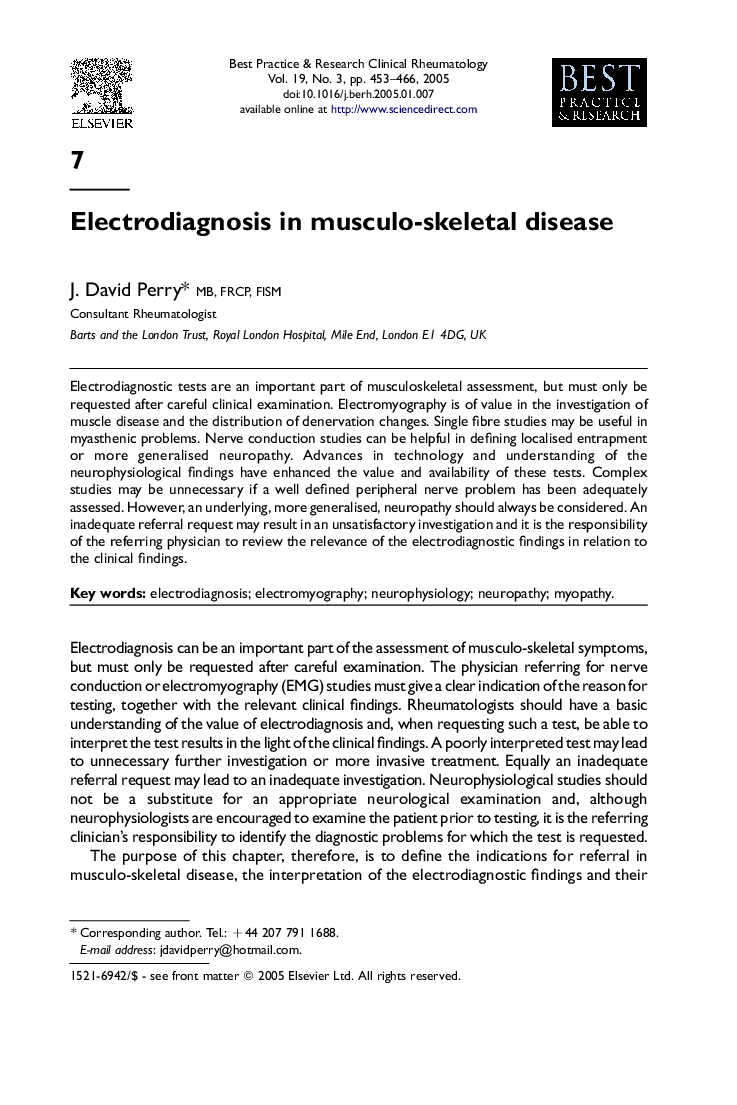| Article ID | Journal | Published Year | Pages | File Type |
|---|---|---|---|---|
| 9261876 | Best Practice & Research Clinical Rheumatology | 2005 | 14 Pages |
Abstract
Electrodiagnostic tests are an important part of musculoskeletal assessment, but must only be requested after careful clinical examination. Electromyography is of value in the investigation of muscle disease and the distribution of denervation changes. Single fibre studies may be useful in myasthenic problems. Nerve conduction studies can be helpful in defining localised entrapment or more generalised neuropathy. Advances in technology and understanding of the neurophysiological findings have enhanced the value and availability of these tests. Complex studies may be unnecessary if a well defined peripheral nerve problem has been adequately assessed. However, an underlying, more generalised, neuropathy should always be considered. An inadequate referral request may result in an unsatisfactory investigation and it is the responsibility of the referring physician to review the relevance of the electrodiagnostic findings in relation to the clinical findings.
Related Topics
Health Sciences
Medicine and Dentistry
Immunology, Allergology and Rheumatology
Authors
J. David (Consultant Rheumatologist),
